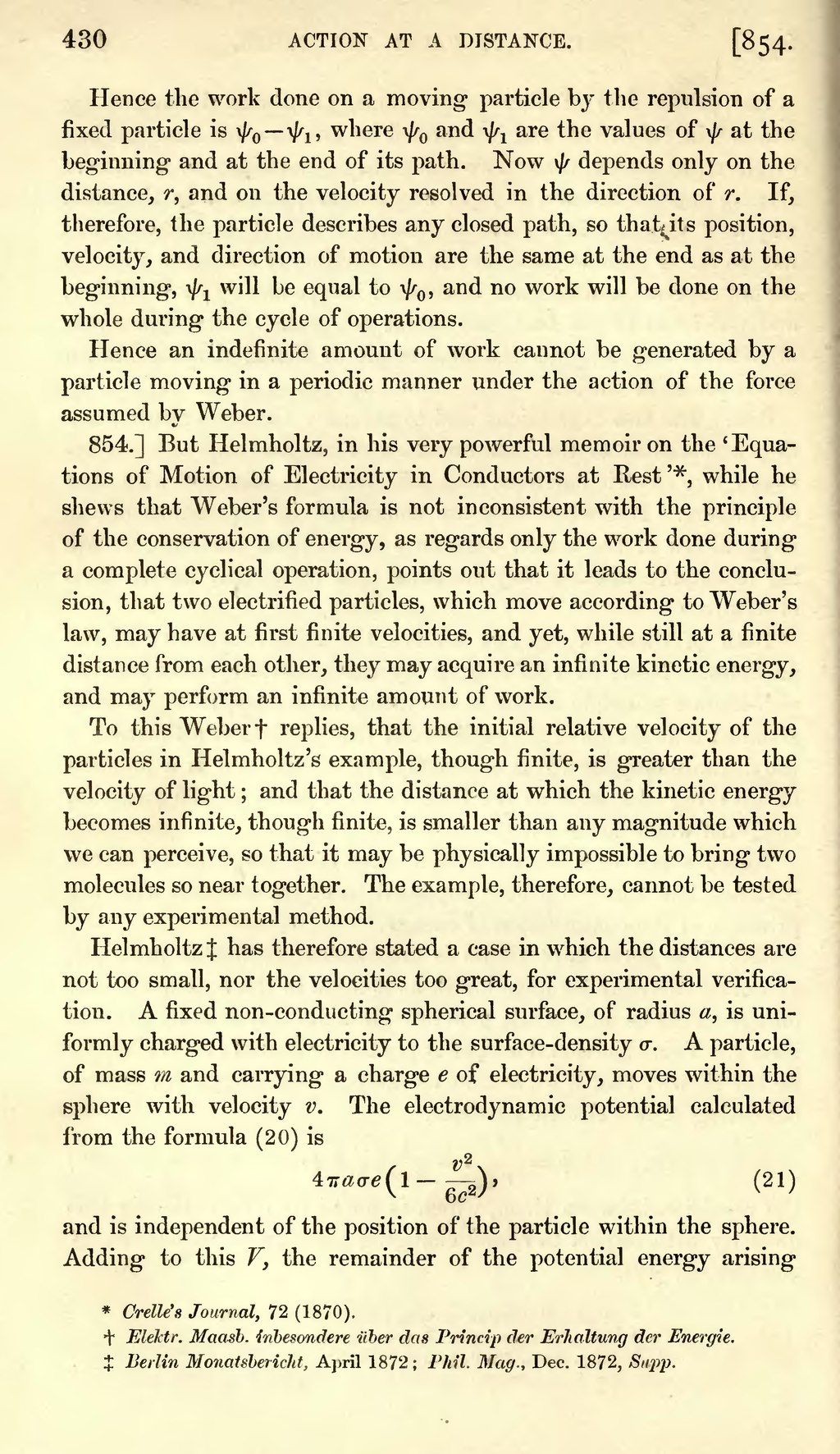Hence the work done on a moving particle by the repulsion of a fixed particle is , where and are the values of at the beginning and at the end of its path. Now depends only on the distance, , and on the velocity resolved in the direction of . If, therefore, the particle describes any closed path, so that its position, velocity, and direction of motion are the same at the end as at the beginning, will be equal to , and no work will be done on the whole during the cycle of operations.
Hence an indefinite amount of work cannot be generated by a particle moving in a periodic manner under the action of the force assumed by Weber.
854.] But Helmholtz, in his very powerful memoir on the 'Equations of Motion of Electricity in Conductors at Rest' [1], while he shews that Weber's formula is not inconsistent with the principle of the conservation of energy, as regards only the work done during a complete cyclical operation, points out that it leads to the conclusion, that two electrified particles, which move according to Weber's law, may have at first finite velocities, and yet, while still at a finite distance from each other, they may acquire an infinite kinetic energy, and may perform an infinite amount of work.
To this Weber[2] replies, that the initial relative velocity of the particles in Helmholtz's example, though finite, is greater than the velocity of light; and that the distance at which the kinetic energy becomes infinite, though finite, is smaller than any magnitude which we can perceive, so that it may be physically impossible to bring two molecules so near together. The example, therefore, cannot be tested by any experimental method.
Helmholtz[3] has therefore stated a case in which the distances are not too small, nor the velocities too great, for experimental verification. A fixed non-conducting spherical surface, of radius , is uniformly charged with electricity to the surface-density . A particle, of mass and carrying a charge of electricity, moves within the sphere with velocity . The electrodynamic potential calculated from the formula (20) is
| (21) |
and is independent of the position of the particle within the sphere. Adding to this , the remainder of the potential energy arising













